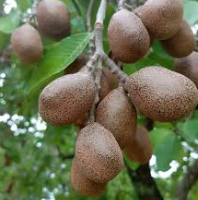Isolation and Characterisation of Akuammine from the Seed of Parinari curatellifolia and its Molecular Dynamics in Angiotensin -1- Converting Enzyme Inhibition
Main Article Content
Abstract
Over the years, isolated compounds from medicinal plants have been lead candidates in drug discovery and they are useful therapeutic aid to patients. This work isolated a compound from the seed of Parinari curatellifolia and investigated its inhibitory potential and mechanism on angiotensin-1-converting enzyme (ACE1). The methanolic extract of the seed was subjected to chromatographic techniques and yielded a white, crystalline solid. Structural elucidation of the compound was carried out using NMR and MS spectroscopic techniques. The use of N-(3-[2-furyl-acryloyl]-Phe-Gly-Gly) (FAPGG) as an enzyme substrate and the Michealis-Menten method in this study showed how sensitive and fast ACE1 could be inhibited. Inhibition mechanism was explored using the Lineweaver-Burk model, and IC50 was determined using Cheng-Prusoff empirical analysis. Molecular interaction with ACE1 was investigated computationally. NMR and MS spectroscopy showed the compound to be Akuammine, with 26 protons, 22 carbons, 2 nitrogen, and 4 oxygen atoms and chlorinated molecular ion peak at m/z 417.1593. Akuammine exhibited an IC50 of 8.5 µM and displayed mixed type inhibition. Molecular dynamics simulations indicated strong interaction at the allosteric site of ACE1, primarily through hydrophobic interactions. Akuammine demonstrated an ability as a template for antihypertensive agent. This ability may contribute to the ethno botanical uses of Parinari curatellifolia seed.
Downloads
Article Details

This work is licensed under a Creative Commons Attribution-NonCommercial-NoDerivatives 4.0 International License.
How to Cite
References
World Health Organisation (2019), https://www.who.int/news-room/fact-sheets/detail/hypertension.
Navar LG. Physiology: hemodynamics, endothelial function, renin–angiotensin–aldosterone system, sympathetic nervous system. J. Am. Soc. Hypertens. 2014; 8(7): 519-524. https://doi.org/10.1016/j.jash.2014.05.014
Fang L, Geng M, Liu C, Wang J, Min W, Liu J. Structural and molecular basis of angiotensin-converting enzyme by computational modeling: Insights into the mechanisms of different inhibitors. PLoS One. 2019; 14(4): e0215609. 10.1371/journal.pone.0215609
Fountain JH, Kaur J, Lappin SL. Physiology, Renin Angiotensin System.. In: StatPearls [Internet]. Treasure Island (FL): StatPearls Publishing. 2023; https://www.ncbi.nlm.nih.gov/books/NBK470410/
Lacaille-Dubois MA, Franck U, Wagner H. Search for potential Angiotensin Converting Enzyme (ACE)-inhibitors from plants. Phytomedicine. 2001; 8(1): 47-52. http://www.urbanfischer.de/journals/phytomed
Page MR. The JNC 8 Hypertension Guidelines: An In-Depth Guide. Am. J. Manag. C. 2014; 20(SP 1).
James PA, Oparil S, Carter BL, Cushman WC, Dennison-Himmelfarb C, Handler J, Smith SC. Evidence-based guideline for the management of high blood pressure in adults: report from the panel members appointed to the Eighth Joint National Committee (JNC 8). J. Amer. Med. Assoc. 2014; 311(5): 507-520. doi:10.1001/jama.2013.284427
Pinargote P, Guillen D, Guarderas JC. ACE inhibitors: upper respiratory symptoms. Case Rep. 2014; bcr2014205462. http://dx.doi.org/10.1136/bcr-2014-205462
Abdulazeez AM, Ajiboye OS, Wudil AM, Abubakar H. Partial purification and characterization of angiotensin converting enzyme inhibitory alkaloids and flavonoids from the leaves and seeds of Moringa oleifera. J. Adv. Biol. Biotechnol. 2016; 5(2): 1-11. Doi: 10.9734/JABB/2016/21974
Olaleye MT, Adegboye OO, Akindahunsi AA. Antioxidant and antihypertensive investigation of seed extract of 10.Parinari curatellifolia. Medicinal plants: phytochemistry, pharmacology and therapeutics. 2010; 1: 363-377.
Crown OO, Olayeriju OS, Kolawole AO, Akinmoladun AC, Olaleye MT, Akindahunsi AA. Mobola plum seed methanolic extracts exhibit mixed type inhibition of angiotensin Ⅰ-converting enzyme in vitro. Asian Pac. J. Trop. Biomed. 2017; 7(12): 1079-1084. Doi: 10.1016/j.apjtb.2017.10.009
Holmquist B, Bünning P, Riordan JF. A continuous spectrophotometric assay for angiotensin converting enzyme. Anal. biochem. 1979; 95(2): 540-548. Doi: 10.1016/0003-2697(79)90769-3
Bull HG, Thornberry NA, Cordes MH, Patchett AA, Cordes EH. Inhibition of rabbit lung angiotensin-converting enzyme by N alpha-[(S)-1-carboxy-3-phenylpropyl] L-alanyl-L-proline and N alpha-[(S)-1-carboxy-3-phenylpropyl] L-lysyl-L-proline. J. Biol. Chem. 1985; 260(5): 2952-2962. Doi:
Bradford MM. A rapid and sensitive method for the quantitation of microgram quantities of protein utilizing the principle of protein-dye binding. Anal. biochem. 1976; 72(1-2): 248-254. Doi: 10.1006/abio.1976.9999.
Thomsen R, Christensen MH. MolDock: A new technique for high-accuracy molecular docking. J. Med. Chem. 2006; 49: 3315-3321. Doi: 10.1021/jm051197e
Halgren TA. Merck molecular force field. I. Basis, form, scope, parameterization, and performance of MMFF 94. J. Comput. Chem. 1996; 17: 490-519. Doi: 10.1002/(SICI)1096-987X(199604)17:5/6<490::AID-JCC1>3.0.CO;2-P.
Gerber PR, Müller K. MAB, a generally applicable molecular force field for structure modelling in medicinal chemistry. J. Comput. Aid. Mol. Des. 1995; 9: 251-268. Doi: 10.1007/BF00124456
Wang J, Cieplak P, Kollman PA. How well does a restrained electrostatic potential (RESP) model perform in calculating conformational energies of organic and biological molecules? J. Comput. Chem. 2000; 21(12): 1049-1074. Doi: 10.1002/1096-987X(200009)21:12<1049::AID-JCC3>3.0.CO;2-F
Case DA, Darden TA, Cheatham TE, Simmerling CL, Wang J, Duke RE, Luo R., Crowley M, Walker RC, Zhang W, Merz KM, Wang B, Hayik S, Roitberg A, Seabra G, Kolossváry I, Wong KF, Paesani F, Vanicek J, Wu X, Brozell SR, Steinbrecher T, Gohlke H, Yang L, Tan C, Mongan J, Hornak V, Cui G, Mathews DH, Seetin MG, Sagui C, Babin V, Kollman PA. AMBER 10, University of California, San Francisco. 2008.
Lewin G, Le Ménez P, Rolland Y, Renouard A, Geisen-Crouse E. Akuammine and dihydroakuammine, two indolomonoterpene alkaloids displaying affinity for opioid receptors. J. Nat. Prod. 1992; 55(3): 380-384. Doi: 10.1021/np50081a017
Jang JH, Jeong SC, Kim JH, Lee YH, Ju YC, Lee JS. Characterisation of a new antihypertensive angiotensin I-converting enzyme inhibitory peptide from Pleurotus cornucopiae. Food chem. 2011; 127(2): 412-418. Doi: 10.1016/j.foodchem.2011.01.010
Hettihewa SK, Hemar Y, Rupasinghe HP. Flavonoid-rich extract of Actinidia macrosperma (a wild kiwifruit) inhibits angiotensin-converting enzyme in vitro. Foods. 2018; 7(9): 146. Doi: 10.3390/foods7090146
Fu H, Rodriguez GA, Herman M, Emrani S, Nahmani E, Barrett G, Figueroa HY, Goldberg E, Hussaini SA, Duff KE. Tau Pathology Induces Excitatory Neuron Loss, Grid Cell Dysfunction, and Spatial Memory Deficits Reminiscent of Early Alzheimer's Disease. Neuron. 2017; 93(3): 533-541. Doi: 10.1016/j.neuron.2016.12.023


